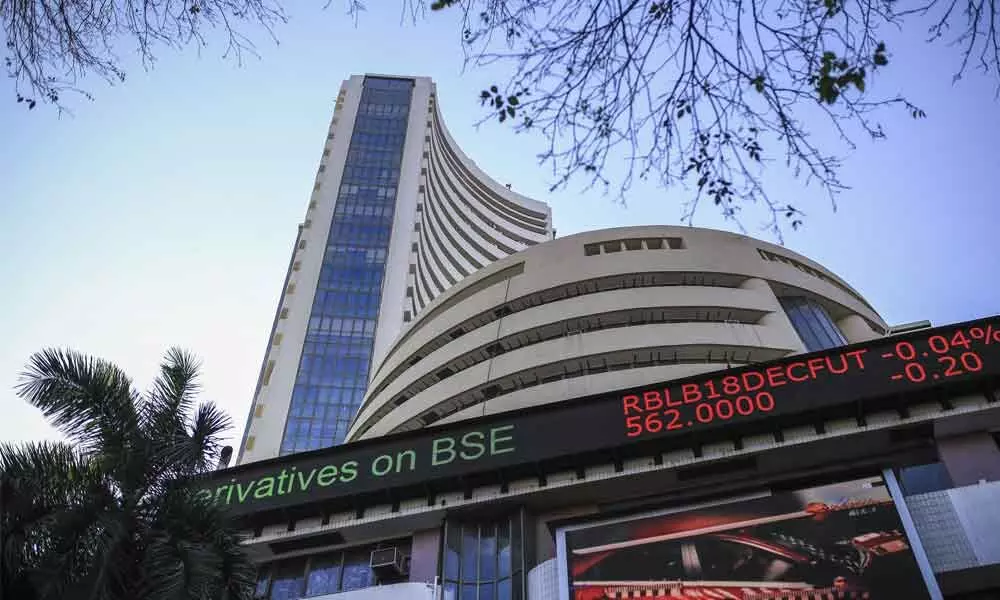Focus on large-cap stocks for stability
Primary markets turn sluggish ahead of mega IPO
image for illustrative purpose

The February 17-23 period under review was extremely volatile and choppy. While the benchmark indices registered small losses, they conveyed only half the story as intraday the moves were much bigger. Markets registered losses on all five trading sessions. BSE Sensex lost 764.62 points or 1.34% to close at 57,232.06 points while Nifty lost 258.95 points or 1.52% to close at 17,063.25 points.
Dow Jones in the last four days lost on every single day and was down 1,392 points or 4.14%. On Monday, the low that BSE Sensex hit was 57,167 against the previous day's close of 57,833 points. The close was at 57,683 points. The daily loss was 150 points while the intraday loss was 666 points. On Tuesday, the intraday movement was even more at 1,289 points lower on BSE Sensex, while the net loss was 383 points. In the process, it has taken support at crucial levels and this could be a breaking point going forward if it is violated downward. The level is 56,300-56,400 on BSE Sensex and 16,800-16850 points on Nifty.
The concerns that global markets are currently having are the same. They are the tension concerning Russia and Ukraine, rising crude oil prices, concern that if the tension escalates, the impact it would have on commodities which come from both these counties and in India, additionally the fact that FII's continue to be sellers. In the last 24 hours, Russia has recognised splinter groups from Donetsk and Luhansk, which are part of Ukraine. This gives a new twist to the ongoing Ukraine and Russia saga and all this has happened without a bullet being fired.
LIC is working feverishly towards completing its IPO process and hitting the markets in Mid-March. They have a new bucket for policyholders and have a reservation for them in the proposed offer for sale. They have kept aside up to 10% of the issue size for this category. They would be offering a discount to applicants in this category as well. The last date for linking PAN cards with policies is 28th February. On close perusal of the DRHP, one also gathers that the present public issue of 5% is only once. Going forward when they dilute the government holding further, they would choose the mechanism available through the stock exchange and do it through the window on the exchange. This would eliminate the need to file a DRHP and go through the cumbersome process of finalising a document and so on.
This also implies that the policyholder bucket would not be available hereafter. This makes this window or bucket an interesting one and probably a once in a lifetime opportunity. All policyholders must link their policies with PAN cards and have the option to apply for the issue when they know the price and the discount.
The primary markets seem to have gone cold with the mega IPO from LIC coming up. To add to their problems are the new rules which will be applicable for issues from April 1. These concern HNI loans, splitting of HNI bucket into two where the first bucket would be from Rs 2 lakhs to 10 lakhs and the second bucket from 10 lakhs and over, and also the anchor book which will have two portions of 30 days and 90 days lock in. With these new rules kicking in, we could actually see a period where the first fortnight of April sees the lone brave issuer tapping the markets and being a learning experience for others to follow.
The state of the markets is highly charged at this point of time. While no bullets are being fired on the Russia-Ukraine border, it is mayhem for markets and diplomacy. No one is sure how things will pan out and therefore one sees super volatile markets on a daily basis. In the period ahead from 24th February to 2nd March, we will see February futures expire on Thursday. This has been a fairly volatile month and as of today, the series is down 47 points or 0.27 per cent. It's hardly anything and the series may end with either the bulls or the bears. Gut feel says that the bears will have it simply because markets are very nervous and most investors/traders are unwilling to take positions in the market.
The strategy should remain to trade only in the large-cap stocks as they are more stable and less volatile than the mid-cap and small-cap stocks in the current scenario. Buy on sharp panic and sell on rallies. Continue to trade with caution and build on cash on the side for better opportunities.
(The author is the founder of Kejriwal Research and Investment Services, an advisory firm)

